Bullock's Wilshire Building
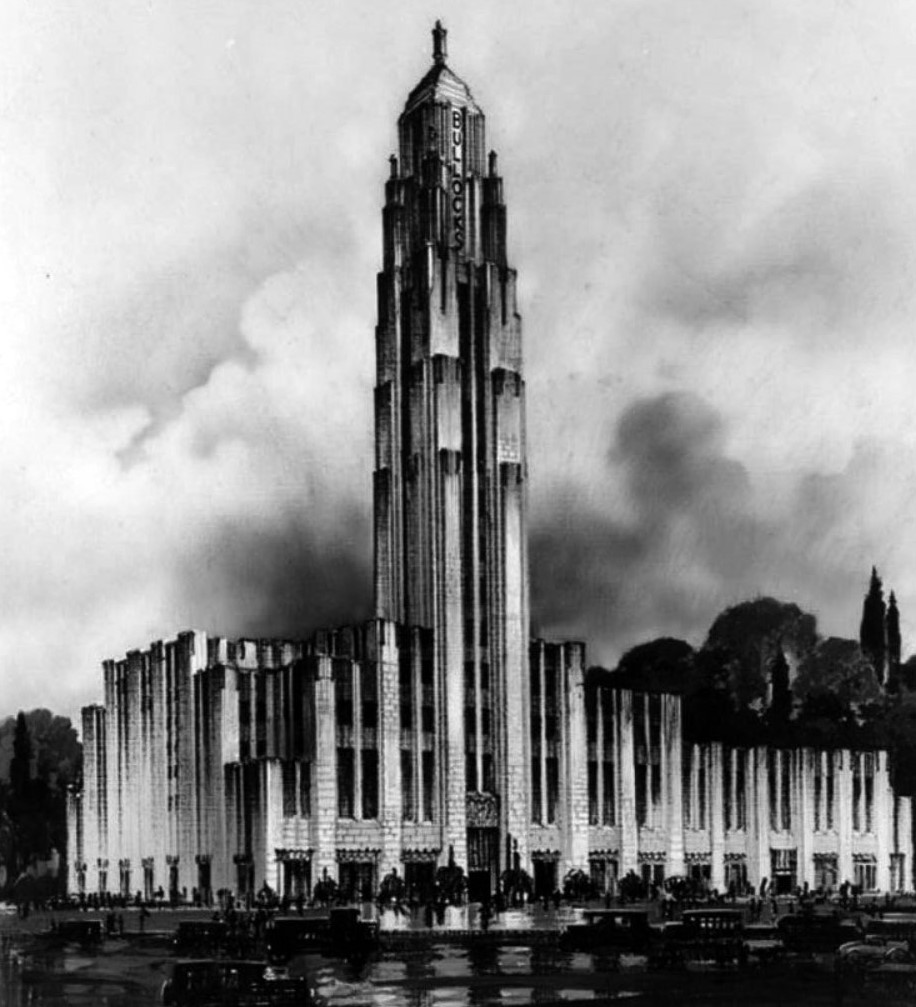 |
|
| (1928)* - Sketch of the new Bullock’s Wilshire store to be erected, as announced by John C. Bullock, president of the firm. |
Historical Notes It was conceived by business partners John G. Bullock and P.G. Winnett to house the upscale Bullock's Wilshire Department Store. But while the building’s function was an ordinary one, its creators had grand ambitions for its design. After visiting the 1925 Exposition of Decorative and Modern Arts in Paris, where the art deco, or moderne, style was introduced, Winnett and architect Donald Parkinson agreed to use this new aesthetic as the inspiration for the department store. When it opened in 1929, the building was one of the first Art Deco structures built in the United States.^ |
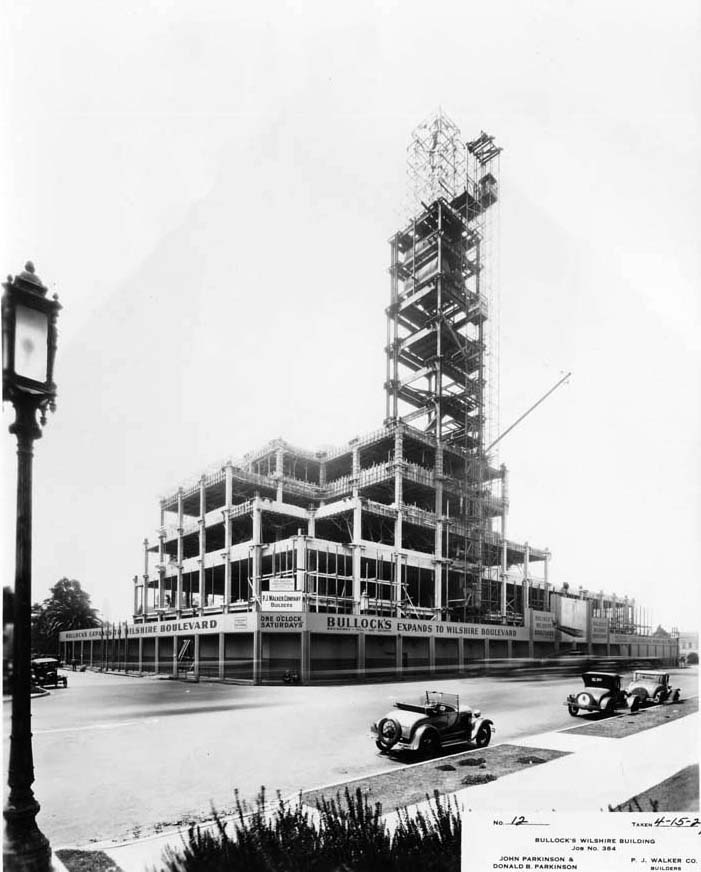 |
|
| (1929)* - View of the Bullock's Wilshire Building during middle stages of construction. |
Historical Notes The first Bullocks department store opened at 7th and Broadway downtown in 1907, and was a cornerstone of the elegant entertainment district that thrived there for decades. In 1929, the company expanded to the far-flung suburbs of Wilshire and Vermont, with a magnificent new tower designed by architects John and Donald Parkinson, who also brought you Union Station and Los Angeles City Hall. |
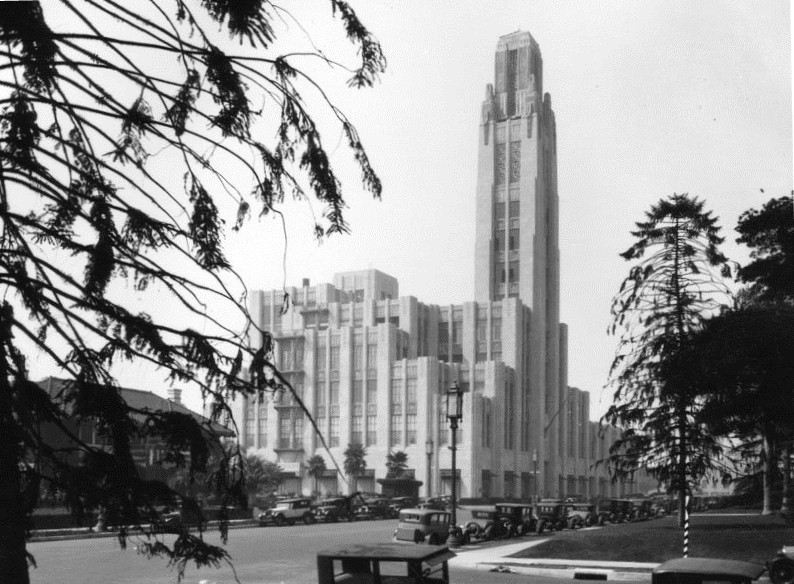 |
|
| (1929)* - View of Bullock's Wilshire department store from a block east at Virgil Avenue where it meets Wilshire Blvd. Various models of old cars are seen on both sides of Wilshire Blvd. |
Historical Notes The Bullock's Wilshire Building was designed by Architects Parkinson & Parkinson in 1928. The building was completed in 1929 as a luxury department store for owner John G. Bullock (owner of the more mainstream Bullock's in Downtown Los Angeles). The exterior is notable for its 241-foot tower whose top is sheathed in copper, tarnished green. At one time, the tower peak had a light that could be seen for miles around.^ |
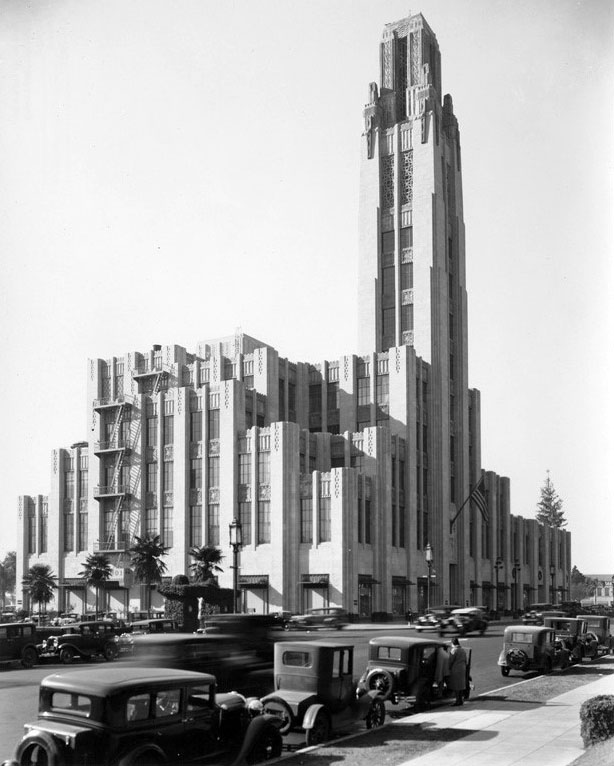 |
|
| (ca. 1929)* – View looking toward the southwest corner of Wilshire Boulevard and Wilshire Place showing the Art Deco style Bullock’s Wilshire. Designed by John Parkinson. Click HERE for contemporary view. |
Historical Notes The Bullock’s Wilshire building, and its beautifully appointed penthouse Tea Room, regularly drew Hollywood elites such as John Wayne, Greta Garbo, Alfred Hitchcock, Marlene Dietrich, Clark Gable and Mae West, as well as residents of the wealthy surrounding communities of Hancock Park, Windsor Square and Fremont Place. This gilded clientele helped the store survive the Great Depression, which began a month after its opening—a grand affair that drew 30,000 people.^ |
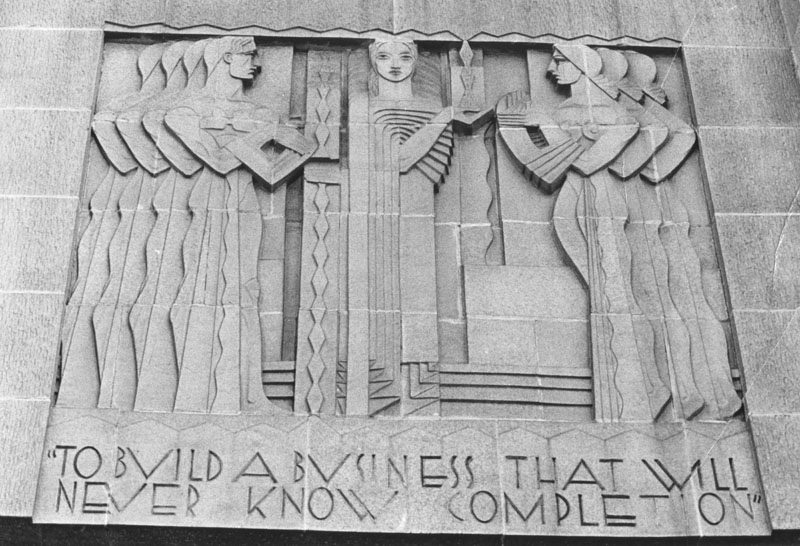 |
|
| (1983)* - Art Deco design by Cedric Gibbons, father of Oscar statuette, is above Bullock's Wilshire's overlooked front entrance. The bas-relief was designed by Cedric Gibbons and sculpted by George Stanley. |
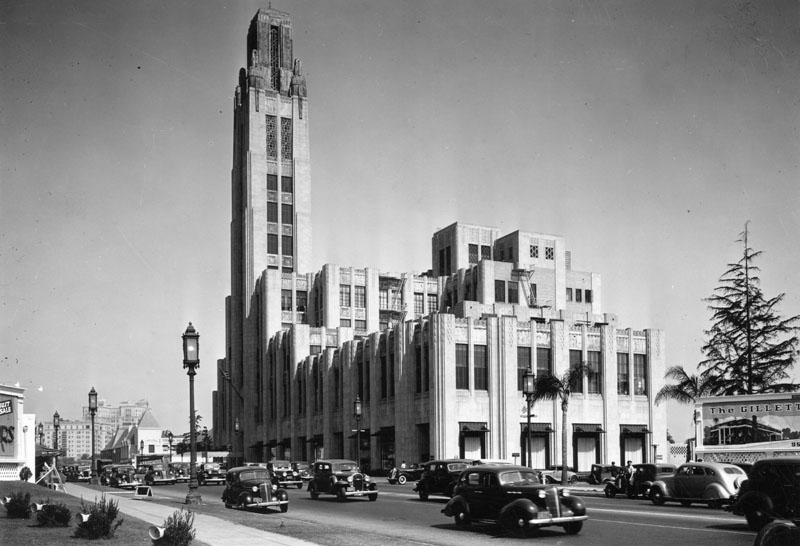 |
|
| (1936)* - View of Bullock's Wilshire from the west. Cars are seen traveling east and west on Wilshire Blvd. James Webb, Engraving and Stationery store, is present in the background on the left. |
Historical Notes Bullock's Wilshire's innovation was that it was one of the first department stores in Los Angeles to cater to the burgeoning automobile culture. It was located in a then-mostly residential district, its objective to attract shoppers who wanted a closer place to shop than Downtown Los Angeles.^ |
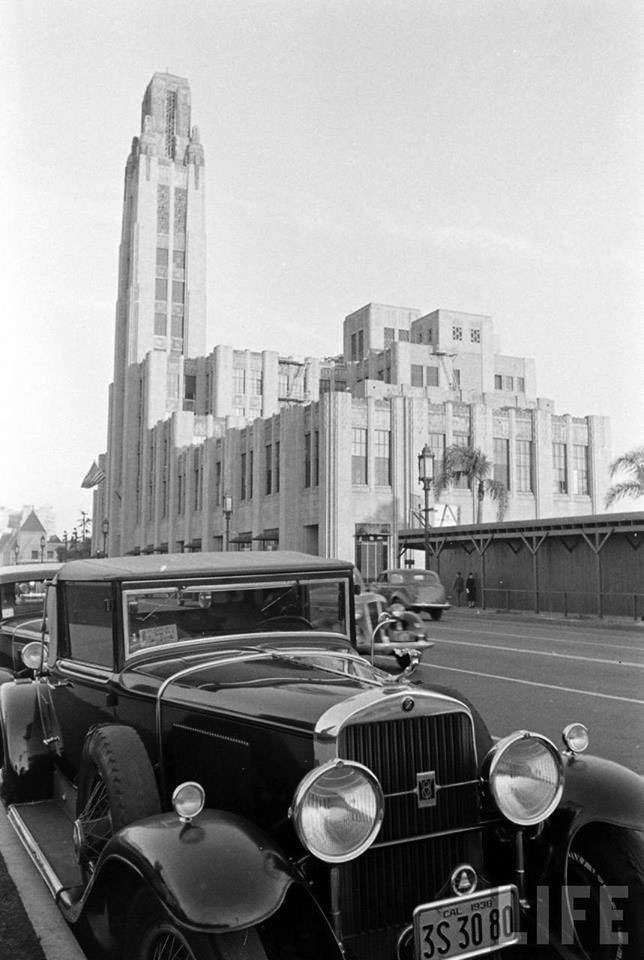 |
|
| (1938)^ - View showing a 1929 Cadillac V8 2-Door Convertible Coupe with Body by Fisher, Style #8680 with Bullock's Wilshire seen across the street. LIFE Magazine |
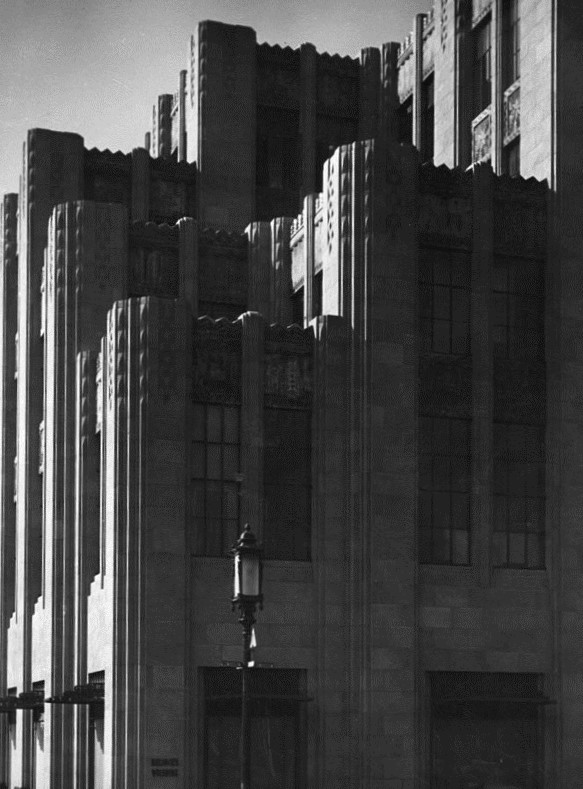 |
|
| (1938)* - Close-up view of a portion of the western side of Bullock's Wilshire. An ornate “Wilshire Special” streetlight stands in front of the art deco building. Click HERE to see more in Early L.A. Streetlights. |
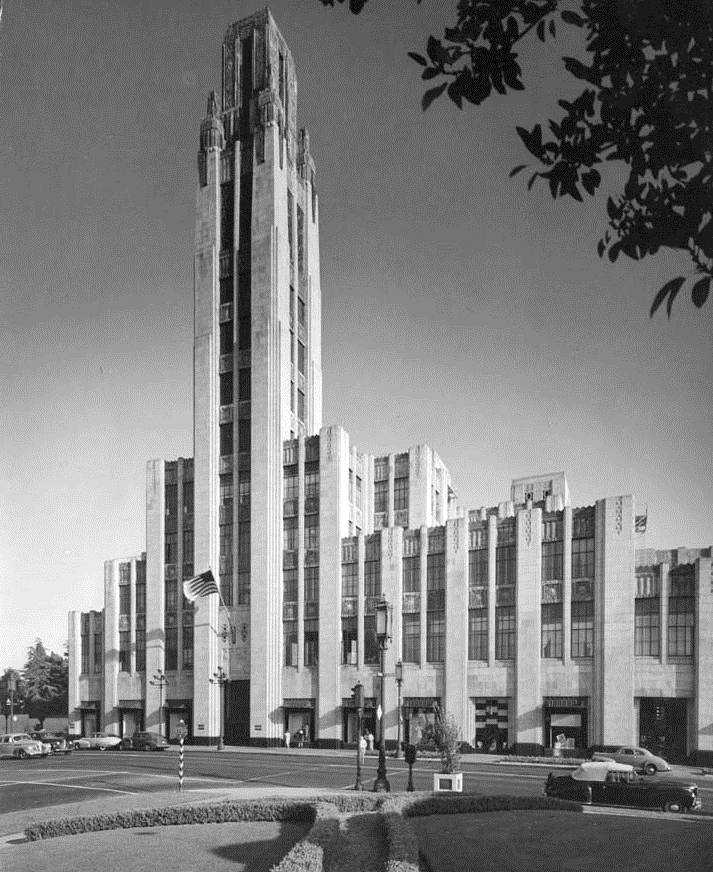 |
|
| (1946)^*# - Front view of the Bullock's Wilshire Building located at 3050 Wilshire Boulevard as seen from across the street. |
Historical Notes Traditional display windows faced the sidewalk, but they were decorated to catch the eyes of motorists. Since most customers would arrive by vehicle, the most appealing entrance was placed in the rear. Under the city's first department store porte cochere, valets in livery welcomed patrons and parked their cars.^ |
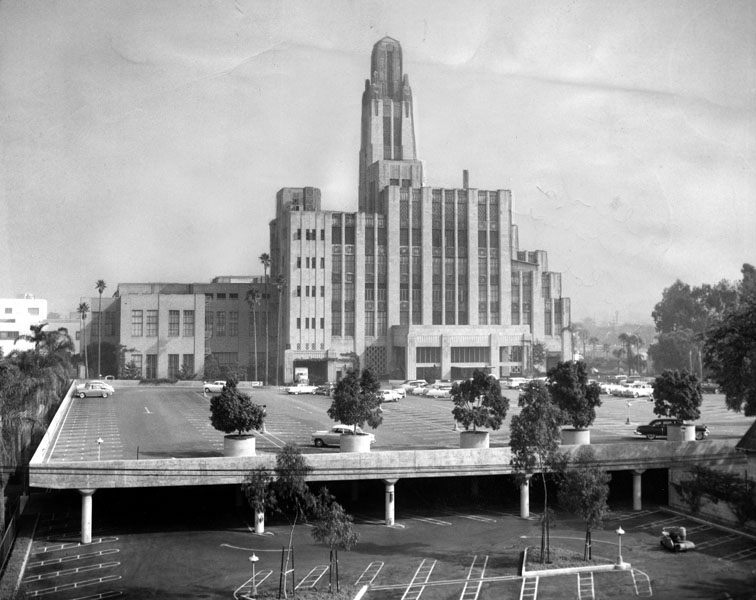 |
|
| (1950)* - Exterior view of Bullock's Wilshire store, hailed as "a cathedral of commerce" a quarter of a century ago. It was the first large store in the nation planned for the convenience of auto patrons. Beauty and utility are blended in the art deco design of the building. |
 |
|
| (ca. 1933)^*# - Exterior night view of the Bullock's Wilshire Building. |
Historical Notes In 1968, the Bullock's Wilshire Building at 3050 Wilshire Boulevard was designated Los Angeles Historic-Cultural Monument No. 56 (Click HERE to see complete listing). In 1978, the building was also listed in the National Register of Historic Places as No.78000685.^ |
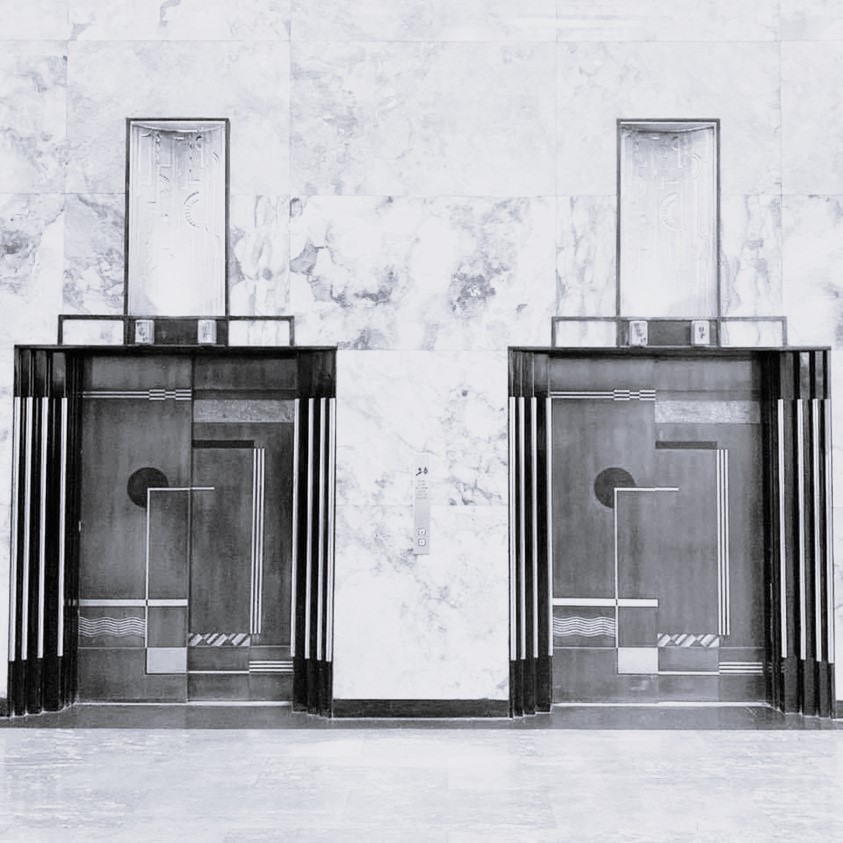 |
|
| (2020s)* - The Art Deco elevators of Bullock's Wilshire. Photo courtesy of Stephen Frank |
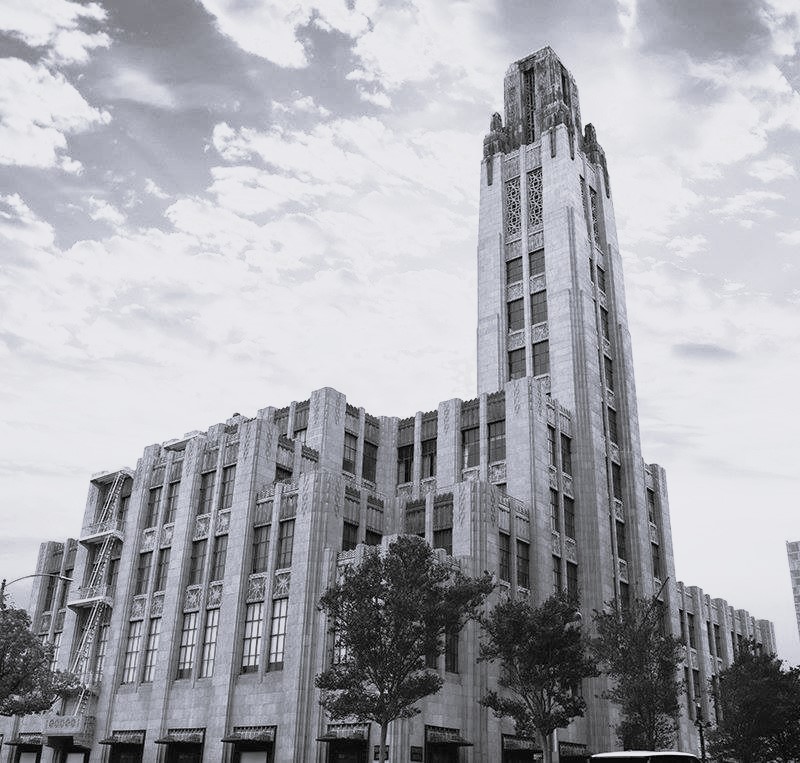 |
|
| (2010s)* - View showing the renovated Bullock's Wilshire Building currently owned by Southwestern Law School. Photo courtesy of Southwestern Law School |
Historical Notes After facing an uncertain future in the 1990s, the building was purchased by neighboring Southwestern Law School, which spent ten years and $29 million to restore historic elements while adapting the building for state-of-the-art academic use. This world-renowned landmark now enjoys new life as an inspirational learning environment and a prime example of adaptive reuse.^ Because it is part of the Southwestern campus, the Bullock's Wilshire Building is not open to the public on a day-to-day basis. However, special tours are offered to Friends of Bullocks Wilshire in the summer. |
* * * * * |
|
Other Sections of Interest |
|
Water and Power in Early LA |
|
Newest Additions |
New Search Index |

A new SEARCH INDEX has been added to help navigate through the thousands of topics and images found in our collection. Try it out for a test run.
Click HERE for Search Index |
* * * * * |
< Back
Menu
- Home
- Mission
- Museum
- Major Efforts
- Recent Newsletters
- Historical Op Ed Pieces
- Board Officers and Directors
- Mulholland/McCarthy Service Awards
- Positions on Owens Valley and the City of Los Angeles Issues
- Legislative Positions on
Water Issues
- Legislative Positions on
Energy Issues
- Membership
- Contact Us
- Search Index
© Copyright Water and Power Associates
Layout by Rocket Website Templates